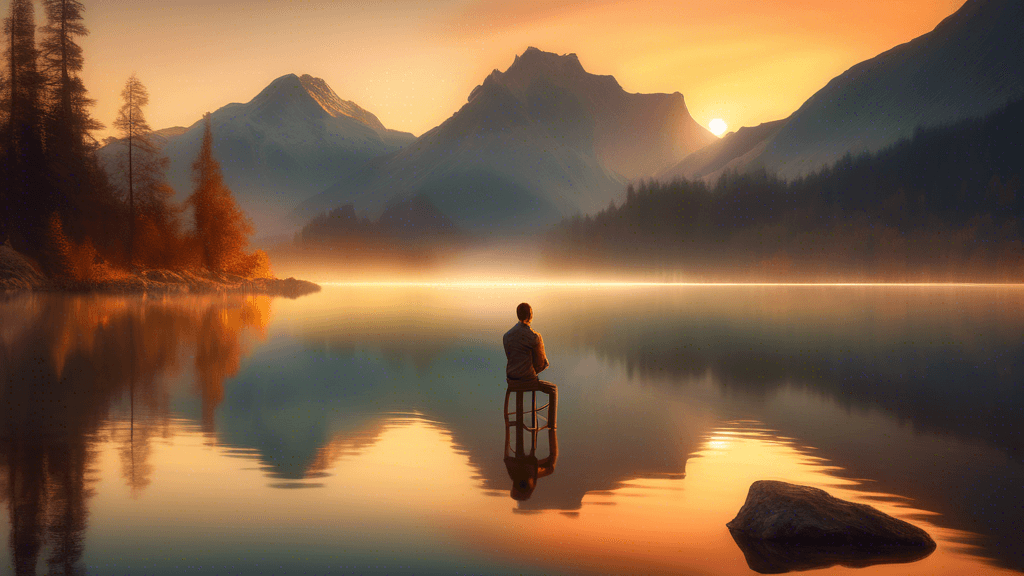
Capturing Beauty: The Art of Using Mirrors in Landscape Photography
Share
The Magic of Mirrors in Landscape Photography
Have you ever wondered why some landscape photos seem almost magical, drawing you into a scene as if you were stepping into another world? One of the secrets behind such captivating imagery could very well be the use of mirrors. This technique, while not new, has gained momentum among both amateur and professional photographers looking to add a unique twist to their compositions. But why use mirrors in landscape photography and how can you do it effectively to not only capture beauty but also to tell a story?
Why Use Mirrors in Landscape Photography?
Mirrors in landscape photography are more than just tools for reflection; they are gateways to creativity and new perspectives. They challenge the viewer's perceptions, turning ordinary scenes into extraordinary ones. Here’s why mirrors might just be the transformative element you need in your landscape photography:
- Enhancing Composition: Mirrors can be used to redirect the viewer’s attention within the frame, often creating symmetry or highlighting elements that would otherwise go unnoticed.
- Adding Depth and Dimension: A well-placed mirror can add depth to a scene, giving a two-dimensional image a three-dimensional feel.
- Creating Visual Interest: By introducing reflections, photographers can add layers of interest, making the composition more engaging and thought-provoking.
- Innovative Storytelling: Mirrors can be used to introduce elements outside the direct line of sight, subtly incorporating broader themes or narratives into the landscape.
Mastering the Art of Mirror Placement
The key to effectively using mirrors in landscape photography lies in strategic placement. Here are some tips to help you master this technique:
- Choose the Right Size and Shape: The size and shape of the mirror depend on what you want to reflect in your composition. Larger mirrors can cover vast areas, while smaller mirrors are perfect for highlighting details.
- Experiment with Angles: Even a slight change in angle can dramatically alter the reflection and hence the impact of the image. Experiment with different angles to see what adds the best value to your composition.
- Consider the Environment: Ensure that the placement of the mirror does not disturb the natural setting or leave behind any damage. Respect the environment to maintain its original beauty and integrity.
Challenges and Creative Solutions
Using mirrors outdoors comes with its set of challenges. One of the main issues is dealing with the elements. Wind can shift the position of your mirrors, and unexpected weather changes can affect your setup. Here’s how you can handle these challenges:
- Secure the Mirror: Use natural elements such as stones or branches to secure the mirror against wind. Make sure whatever you use also blends with the environment to keep the scene looking natural.
- Use Weather-Resistant Mirrors: Invest in mirrors with weather-resistant frames or apply a protective sealant to prevent damage from moisture and dirt.
Inspirational Examples and Quotes
Many renowned photographers have turned to mirrors to enhance their landscape photography. Ansel Adams, known for his black-and-white landscape photographs, once said, A good photograph is knowing where to stand. This idea is crucial when using mirrors because finding the right location to place your mirror can transform an image.
Another example is Lee Friedlander, who utilized mirrors to include the urban environment within his landscapes, creating a juxtaposition between nature and human-made elements. His approach highlights how mirrors can be used to create a dialogue between different aspects of an environment.
Conclusion
Mirrors can open up a new dimension of creativity in landscape photography. By reflecting the environment, they not only amplify the beauty but also introduce layers of depth and intrigue, challenging the viewer to see the world in different ways. If you're looking to elevate your photographic artistry or simply want to try something new, consider the strategic use of mirrors in your next outdoor adventure.
Are you ready to experiment with mirrors in your landscape photography? Think about how you can integrate this technique into your next project. Remember, the most important part is to have fun and let your creativity shine through the lens!





